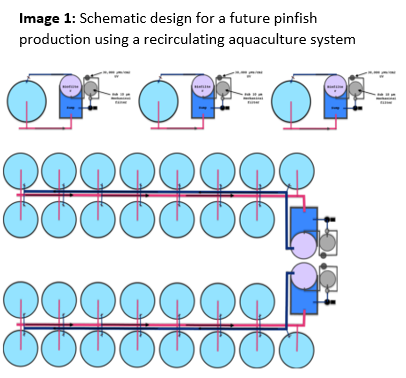EVALUATION AND BUSINESS PLAN FOR PINFISH Lagodon rhomboides PRODUCTION UTILIZING A RECIRCULATING AQUACULTURE SYSTEM IN FLORIDA
Pinfish (Lagodon rhomboides) are a common baitfish in the southeastern United States and have been shown to be a preferred bait species in Florida specifically. Currently, all pinfish supplied to bait stands in Florida are wild-caught , which has led to high variability in the quantity and quality of bait provided by bait stands. This deficiency causes a demand from marine recreational anglers for a consistent supply of pinfish and produces an opportunity for an aquaculture market to develop. Aquaculture production could supplement pinfish supply while providing the consistent quality that is demanded by anglers and retailers. Th is evaluation was conducted to determine if pinfish production using a recirculating aquaculture system could be financially viable in Florida.
Current research supports using recirculating aquaculture systems for pinfish production , which led to the system that was developed for this evaluation . A business plan was designed to determine the methods in which a future pinfish production could operate and become financially viable. Th e business plan serves as a guide for future marine baitfish producers, especially in Florida. The proposed production methods, the managerial structure of the business, marketing potential, and production budgets for th e future farm were considered in this assessment. The goal of this evaluation was to present a potential method for pinfish production that could prove to be financially viable if such a marine baitfish market were to develop.
